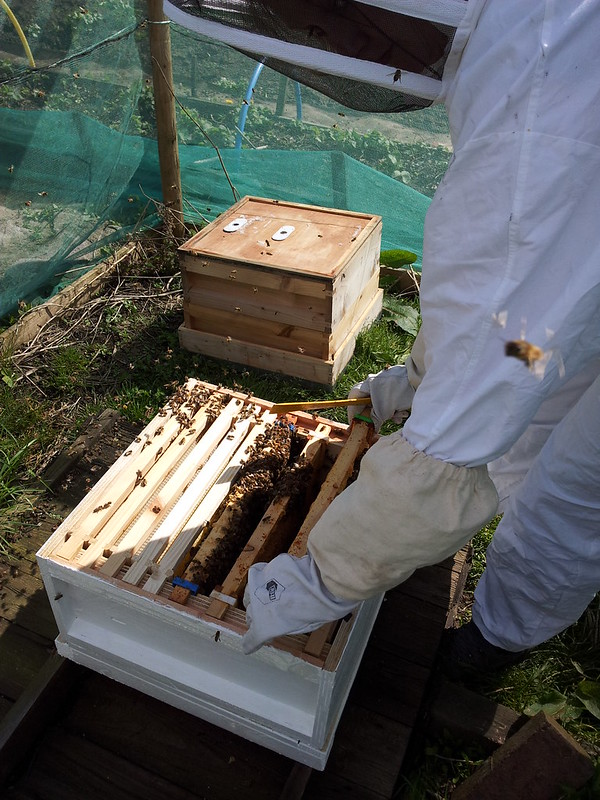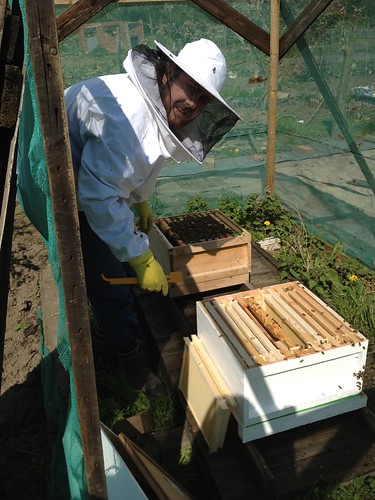This is the Beekeeper's Wife speaking now. I volunteered to write this blog in order to keep what could be a very technical and complex apiary visit simple for those of us who aren't as knowledgable about Bees.
On Monday (16.04.12) I had a day off work and the Beekeeper's Daughter was with her childminders and the weather was warm and bright so we went to visit the Bees to do an inspection and to split the hive. When we parked at the side of the allotment we could see a huge amount of Bees in front of the hive and they were very noisy. We put our suits on and lit the smoker (even though it was barely used) and approached the hive taking with us the brood box and roof of the spare hive (Hive 2). What follows is the step by step guide to "How to Split Your Hive".
- Take off the roof and supers of Hive 1 (AKA Buzzingham Palace) and set aside.
- Move Hive 1 about a metre to the left and place Hive 2 where Hive 1 once was. This will mean that any bees that were out foraging will return to Hive 2. All the bees that were still in Hive 1 will learn where they have been moved to on their subsequent flights out.
- Inspect the frames in Hive 1 as normal, looking for the Queen, eggs and larvae.
- When the Queen has been found place the frame that she is on into Hive 2 leaving Hive 1 Queenless. When the remaining Bees become aware that they have no Queen they SHOULD start to produce a replacement by feeding some larvae with Royal Jelly.
- Move a couple of other frames of worker bees from Hive 1 to Hive 2 so they can look after the Queen and continue to collect pollen and nectar.
- Add a frame feeder to Hive 2, full of sugar water (2lb sugar dissolved into 2 pints water) to help the newly moved bees to eat well as most of their honey stores are in Hive 1.
- As Hive 2 needs to have some more adult bees than just those on the couple of full frames that have been transferred, it is necessary to "shake" some more bees into Hive 2 from the frames taken from Hive 1. To do this take a frame full of bees in both hands and hold into Hive 2, brace yourself and shake down really hard, dislodging most bees into their new home.
- Replace the roof on both hives and keep fingers crossed that Hive 1 will replace their Queen and that Hive 2 starts to produce lots of baby bees to collect nectar to make lots of honey.
This operation was very interesting to watch and participate in a little. I was amazed at just how many bees were flying around and landing on me and just how noisy they were; and just how un-scary it was!
 |
| Shaking a frame of bees |
 |
| A beekeeper and his hives! |
Ah. Now I can tell this was written by a woman. The instructions are clear, loud and given as an order. What better way to deal with men?
ReplyDeleteIt is difficult to be absolutely sure, but there seems to be a hell of a lot less hair under that face veil in the last photo?
There is just as much beard action going on, must just be the angle! I'm thinking of trimming it soon though.
DeleteI may let my wife write more posts. She does make it easy to understand then when I write!